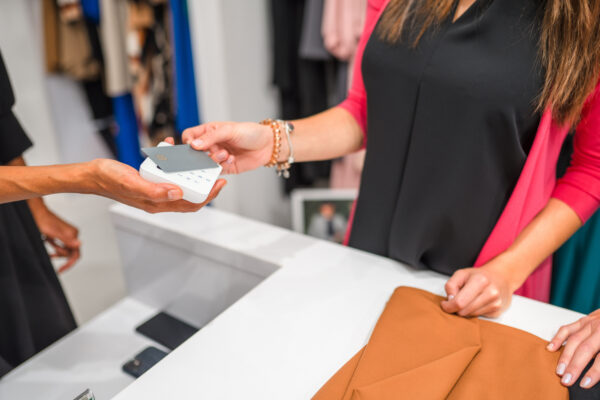Post-sale interactions between customers and your business may simply be communicating about warranties, upgrades or repairs, installation, personalized offerings, or troubleshooting. But continuing engagement with your customers is important to further solidify the relationship, drive loyalty, and ensure satisfaction. While those ideas are a great way to maintain the relationship, brands need to catch up with how consumers are using technology to shop and interact with their favorite retailers.
A Google survey found that 66% of people said that they’re interested in using augmented reality (AR) for help when shopping, and Shopify revealed that interactions with products having 3D content showed a 94% higher conversion rate than those without it.
With the high interest from consumers, it’s clear that AR and even virtual reality (VR) should be used in all customer interactions, even post point of sale. So how can brands utilize these technologies after customers make a purchase?
Using AR and VR Post Sale
Think about what happens after you make a sale. How is your organization interacting with your customers to create brand loyalty and essentially make your product indispensable?
You can use AR and VR technologies in post-point-of-sale customer interactions in various ways.
1. Self Service and Technical Support
Often customers will have questions, and they want answers quickly. One of the key advantages of AR and VR in the post-sale experience is the ability to provide customers with detailed product information. This could include interactive product manuals and tutorials as well as a mobile repository of product knowledge with FAQs, training material, or step-by-step instructions that show how to build furniture or use a new piece of kitchen equipment. Also, AR-based self-service support has been utilized in many smart home applications.
You can also look at integrating AR and VR into more technical support interactions. So often customers become frustrated having to go back and forth with tech support, but customers can utilize AR and VR by taking their smartphone up to the product and then all parts will be identified in real time by the app. Then support agents know instantly the exact name and model number of the malfunctioning device, resulting in faster issue resolution times.
Integrating these technologies allows customers to learn how to use their new products in a more engaging and effective way and improves the customer experience while reducing the number of support requests and returns.
2. Gamifying the Retail Experience
As humans, we all have an instinct for competition and the rewards that come along with it, which is why gamification experiences incentivize shoppers to play and stay engaged throughout the customer journey.
Examples of how brands could use AR and VR for gamification include:
- A scavenger hunt where customers scan product packaging to find hidden rewards
- Entering a virtual environment where customers can earn rewards for completing challenges
These experiences can help increase customer engagement and brand loyalty.
3. Customer-to-Customer Interactions
Like-minded people love to find others to connect with and bond over their shared interests. Brands can bring these people (such as patients on the same medication, car enthusiasts, or fashion influencers) together in a virtual setting for exclusive offers or to connect. These specialized events are a great way to increase customer satisfaction and experience.
AR and VR have the potential to revolutionize the retail industry by providing customers with immersive and personalized experiences. From virtual try-on to interactive product displays, AR and VR can help retailers create engaging and memorable experiences that drive sales and build brand loyalty. While there’s still growth to be done, the benefits are clear. As technology continues to advance, brands should expect to see even more innovative applications in the retail space, transforming the way customers shop and interact with products.
To learn more about how we can help you bring these immersive experiences to your customer experience, contact us.


It will be interesting to see if Apple can get things moving / shake things up with their entry into the headset market later this year.
It’s fascinating to see how these technologies can be utilized to bridge the gap between the physical and digital realms, allowing customers to have immersive and interactive experiences even after making a purchase. I look forward to seeing more innovative applications of these technologies and how they can further enhance our shopping experiences in the future. Kudos to the author for shedding light on this exciting topic!